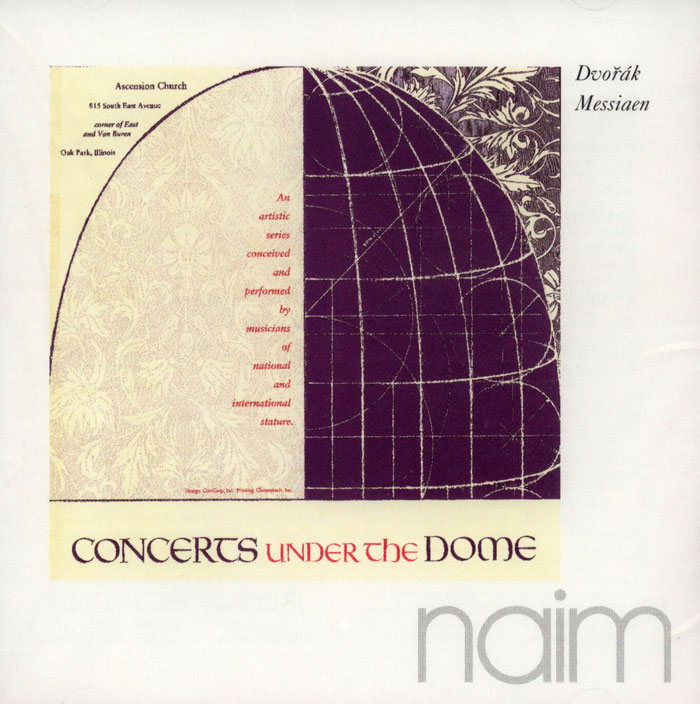Logowanie
Mikołaj - ten to ma gest!
Elton John, The Mamas & The Papas, Cat Stevens, Rod Stewart, Bobbie Gentry, Stevie Wonder, Engelbert Humperdinck
Memory Lane
Edycja Numerowana - 1000 egzemplarzy w skali światowej
RACHMANINOV, Eiji Oue, Minnesota Orchestra
Symphonic Dances / Vocalise
Best Recordings of 2001!!! NAJCZĘŚCIEJ KUPOWANA PŁYTA Z RR!
Karnawał czas zacząć!
Music of Love - Hi-Fi Latin Rhythms
Samba : Music of Celebration
AUDIOPHILE 24BIT RECORDING AND MASTERING
CHOPIN, LISZT, DEBUSSY, DVORAK, Gerhard Oppitz
Dances romantiques - A fantastic Notturno
Wzorcowa jakość audiofilska z Clearaudio
Winylowy niezbędnik
ClearAudio
Double Matrix Professional - Sonic
najbardziej inteligentna i skuteczna pralka do płyt winylowych wszelkiego typu - całkowicie automatyczna
DVORAK, MESSIAEN, The Vermeer Quartet
Concerts Under The Dome - Quatour pour le Fin du Temps
- Dvorák: Quartet No. 9 in D minor, Opus 34 (B.75)
- 1. Allegro 9:17
- 2. Alla Polka 5:59
- 3. Adagio 8:18
- 4. Poco Allegro 5:11
- Messiaen: Quatour pour le Fin du Temps
- 1. Liturgy of Crystal 2:45
- 2. Vocolise for the Angel who Announces the end of Time 4:50
- 3. Abyss of the Birds 8:37
- 4. Interlude 1:40
- 5. Praise to the Eternity of Jesus 6:39
- 6. Dance of Fury, for the Seven Trumpets 6:27
- 7. Cluster of Rainbow, for the Angel who Announces the end of Time 7:20
- 8. Praise to the Immortality of Jesus 6:28
- Total Time: 73:39
- The Vermeer Quartet - quartet
- DVORAK
- MESSIAEN
This is a second selection of live recordings made 'under the dome' of the Ascension Church, Oak Park, Illinois, by Ken Christianson to appear on Naim Audio's CD label. Musically, it is stronger than the first release, and the performers prove a match for what they play. You would expect nothing else from the first-rate Vermeer Quartet, but I was lost in admiration for the way the young soloists coped with the demands of the Messiaen, a work which ruthlessly exposes all four players, especially the clarinet and the piano. Messiaen composed his Quartet for the End of Time while a prisoner-of-war in Silesia. He found his inspiration, not to mention his vivid imagery, in chapter ten of the Revelation of John yet, even with this motivation, the ability to compose a masterpiece of this stature under prison camp conditions surely denotes a special kind of genius and, for that matter, a special kind of faith. Messiaen's choice of instruments - clarinet, violin, cello and piano -now appears utterly perfect for the work, yet was dictated by what was available to him at the time. At the first performance, held in the prison camp in January 1941, the piano was out-of-tune, the cello was cracked and had only three good strings, and the clarinet had broken keys, yet the audience of 5,000 prisoners was apparently transfixed by this strangely beautiful music The Quartet is divided into eight sections, all but one - the Scherzo - given titles rich in apocalyptic imagery: the Dance of Fury for the Seven Trumpets; the Cluster of Rainbow for the Angel who announces the End of Time; the Liturgy of Crystal; the Abyss of the Birds - this last a lengthy, vividly descriptive and highly demanding solo for clarinet Here, John Bruce Yeh tackles this eight-and-a-half-minute movement with breathtaking virtuosity and understanding -a remarkable feat under live conditions. Yet his colleagues are no less praiseworthy in their sympathetic interpretation of this unique and remarkable twentieth-century masterpiece. It is also superbly recorded, Ken Christianson achieving a satisfying balance between the four instruments. Rare indeed must be the occasions when a work by Messiaen has been paired with one by Dvorak, but such is the case here, the Vermeer Quartet performing the Op.34 String Quartet which the composer wrote at breakneck speed over a few days in December 1877. Such haste did not leave its mark on the quality of the work, which is as fine as any of Dvorak's chamber compositions. He dedicated it to Brahms, and the first movement is replete with autumnal Brahmsian tints. After a polka-like scherzo, the adagio, with its ominous undercurrents and moments of melancholy, seems strangely unlike the normally optimistic Dvorak -until you learn that two of his children had died in the weeks preceding the composition of this quartet. That optimism retums, however, in the vivacious finale. The Vermeer Quartet offers a warmly expressive, affectionate performance of the Dvorak, and I appreciated the way that the recording illuminated each strand of the texture. But it is also a fairly close recording. with little sense of acoustic. It may be, of course, that conditions dictated such a microphone placement. More importantly, the sound has the richness of tone and fullness of body which you expect from a quartet recording and is free from the glassy, sterile sheen which mars some modem chamber music productions. The Vermeer's cultured Dvorak playing , and the thrilling performance of the Messiaen make for an unexpectedly winning combination. Peter Herring writing in Hi Fi World, 1995





























